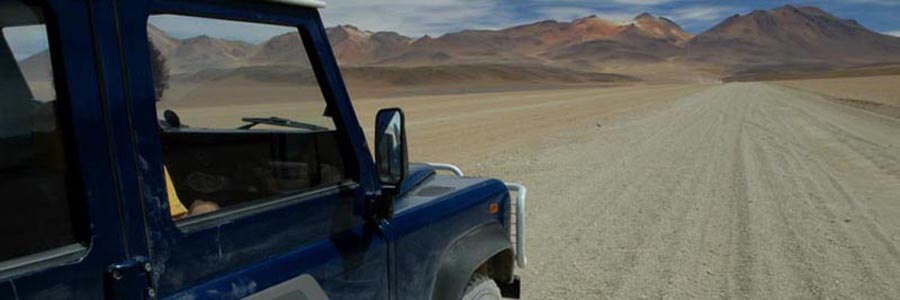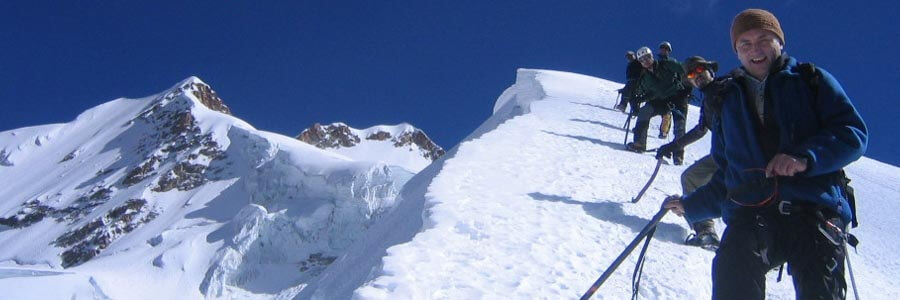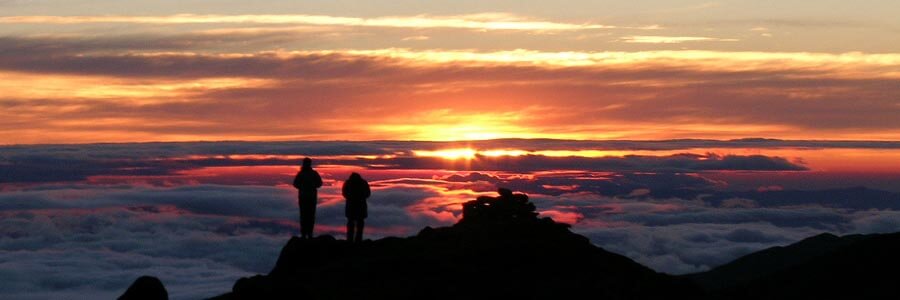The amazingly varied landscape in the central part of the South American continent (the area we operate our trips) is something difficult to describe in few words.
The main geographic characteristic is of course the Andean mountain range that rises up from the Pacific coast of the American continent. This is not only the longest (7,500km) but also the youngest mountain range on the planet. After the Himalayas, it is the second highest range and still growing. Formed by the subduction of the Nazca plate under the South American plate, the Andes - a real backbone of the continent - is composed by tectonic snow capped peaks and many volcanoes.
To the west of the mountain range and sandwich between the mountains and the pacific coast line, there is a long belt narrow belt of land extremely dry in southern Peru and the northern Chile. The Atacama Desert – the driest place on earth after the Antarctica - is part of this extraordinary land.
The Andes on the central western side are mostly formed by volcanoes; the huge desert that includes the Atacama and the Bolivia “Lipez” has more volcanic cones over the earth surface per square kilometer than anywhere else in the planet.
Between the volcanic range at the western side of the Andes and the tectonic mountain range at the eastern side, there is a big plateau known as the “Altiplano”, despite its name this endless land is not completely flat but concave, there in the lowest part in this huge bowl the salt concretated creating Uyuni salt flats; the biggest salt concentration in the world. Enough to say that this area of Bolivia has been chosen by the Dakar race owners to organize the competitions since 2013.
The northern highland around Lake Titicaca is more fertile and populated while the southern part more inhospitable and dotted by hundreds of volcanoes (some of them still active), spectacular colorful lagoons, surrealistic salt lakes, and unexpected beautiful high-altitude oasis.
Several microclimatic regions constitute the Cloud Forest, also called “Yungas” located at the eastern side of the mountain ranges of Apolobamba, Cordillera Real, and Quimsa Cruz. The highest part remains cloudy 300 days of the year. The whole area works as a shield to the humid currents that rise from the Amazonian jungle, helping to create a unique ecosystem of cold humid forests.
Those subtropical steep and rugged mountain valleys house an abundance of exuberant vegetation and animals. Continuing towards to the east, the roads link Bolivia with Brasil and eventually with the Atlantic coast line. After the last hills of the mountain range, this low land turns flat again. Water flowing from the mountains creates hundreds of rivers that eventually form the big Amazon River. In the middle of this flat land some rivers flood huge extensions known as Pantanales.
Across all this land and thanks to an intensive mining and agricultural activity, we have a large net of roads connecting all possible landscapes you can imagine, most of them dirty and rouged roads.
In all these varied land, driving with 4WD vehicles can be an extraordinary and adventurous experience. We invite you to join the 4WD journey that more suits your expectations or to send us your ideas, so we can help you design your own trip visit National Parks, archaeological sites and amazing landscapes.
When overlanding with our vehicles, we usually stay in charming hotels in the main cities and the best accommodation available in the countryside.
For the more adventurous ones we can combine 4WD driving with other activities like: climbing volcanoes, trekking, or just sightseeing.


Uyuni salt flats & lagoons (4WLIPEZ)
Smartly developed route to visit the main touristic attractions in the southern highlands including: Sajama National park, Coipasa & Uyuni salt flats, Colorada & Verde lagoons, Tupiza canyons and Potosi silver mines.

Uyuni salt flats (4WUYUNI)
A 3-day trip to visit Uyuni salt flats; a unique surrealistic landscape of the largest salt concentration in the planet.

Sajama National Park (4WSAJAMA)
Overland journey to visit Sajama National park; the first protected area created in Bolivia.

Stone city, Sajama & Uyuni salt flats (4WSAJUYU)
Traveling to the Uyuni salt flats traversing bizarre volcanic landscape and the spectacular Sajama national park it is not the easiest route but certainly one of the most exciting.

The land of the Kallawayas (4WKALLAW)
An unforgettable experience traversing the pristine landscape of Apolobamba mountain range, home of the mystic Kallawayas Andean shamans.








